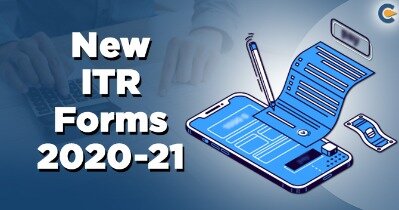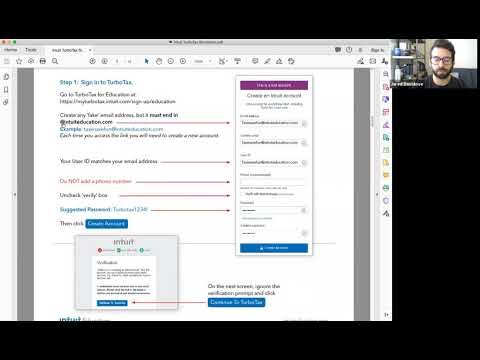Contents:


Investors and creditors use several differentliquidity ratiosto analyze the liquidity of the company before they invest in or lend to it. Investors want to know that their invest will continue to grow and the company will be able to pay returns in the future. Creditors, on the other hand, simply want to know that their principle will be repaid with interest.
Historical cost can also include costs incurred to incorporate an asset into the company’s operations. Liquidity ratios are a class of financial metrics used to determine a debtor’s ability to pay off current debt obligations without raising external capital. What counts as a good current ratio will depend on the company’s industry and historical performance. Current ratios of 1.50 or greater would generally indicate ample liquidity. Finally, the operating cash flow ratio compares a company’s active cash flow from operating activities to its current liabilities. A current ratio that is in line with the industry average or slightly higher is generally considered acceptable.
PPG reports first quarter financial results – InvestorsObserver
PPG reports first quarter financial results.
Posted: Thu, 20 Apr 2023 20:12:33 GMT [source]
These are payments made in advance, such as insurance premiums or rent. Liquidity refers to the ease with which an asset, or security, can be converted into ready cash without affecting its market price. Many or all of the offers on this site are from companies from which Insider receives compensation . Advertising considerations may impact how and where products appear on this site but do not affect any editorial decisions, such as which products we write about and how we evaluate them.
Net working capital
When the entity’s normal operating cycle is not clearly identifiable, it is assumed to be twelve months (IAS 1.68). All assets used/sold, or liabilities settled, within an operating cycle are classified as current, even if this takes more than 12 months. Typical assets used or sold in one operating cycle are inventories and trade receivables. Examples of liabilities settled as part of the normal operating cycle are trade payables and short-term employee benefits.
SEC: doubts about decentralized finance – The Cryptonomist
SEC: doubts about decentralized finance.
Posted: Sat, 22 Apr 2023 06:02:35 GMT [source]
For example, cash and cash equivalents may be listed first, while inventory and accounts receivable could be further down. The cash ratio is the most conservative as it considers only cash and cash equivalents. The current ratio is the most accommodating and includes various assets from the Current Assets account. These multiple measures assess the company’s ability to pay outstanding debts and cover liabilities and expenses without liquidating its fixed assets. Current assets are assets listed on a company’s balance sheet that are planned to be used or sold within a business year.
What is the purpose of current assets?
“Lower levels of current assets relative to sales imply an efficient operation, but shouldn’t be a headwind to a company’s growth trajectory.” For example, a company that builds manufacturing equipment might consider the completed units as inventory and classify them as current assets. However, a company that buys the machinery and will use it for years to come would consider it a fixed asset. This disclosure is thought to facilitate assessing liquidity and solvency of an entity. It’s important to note that the current assets definition is somewhat misleading for investors and creditors since not all of these assets are always liquid.
Prepaid expenses—which represent advance payments made by a company for goods and services to be received in the future—are considered current assets. Although they cannot be converted into cash, they are payments already made. Prepaid expenses might include payments to insurance companies or contractors.
Uses of Current Assets
More discussion about these amendments can be found in the sections that follow. These were situations where a company could be purchased at prices meaningfully below a conservative estimate of liquidation value . The Structured Query Language comprises several different data types that allow it to store different types of information… A hard asset is a physical object or resource owned by an individual or business. INVESTMENT BANKING RESOURCESLearn the foundation of Investment banking, financial modeling, valuations and more. Inc. has vendor non-trade receivables of $ 17,799 Mn in 2017, which increased to $ 25,809 Mn in 2018.
Trading – These are both debt and equity securities, such as corporate bonds and stocks, that are purchased for the sole purpose of selling them in the near future to generate income. Held to maturity – These are debt securities, such as corporate bonds issued by the company, that are intended to be held to their maturity dates and not turned into immediate cash. Rebekiah received her BBA from Georgia Southwestern State University and her MSM from Troy University.
Current assets are cash and any other assets that a company plans to either turn into cash or consume within one year or in the operating cycle of the asset, whichever is longer. The operating cycle is the time between the purchases of raw materials needed to produce a product and the sale of the actual product. Current assets are presented on the balance sheet in the order that they can be liquidated, or turned into cash. A current asset is something that is intended to be used or sold within a year and includes things like cash and company inventory.
Alcoa Corporation Reports First Quarter 2023 Results – StreetInsider.com
Alcoa Corporation Reports First Quarter 2023 Results.
Posted: Wed, 19 Apr 2023 20:12:21 GMT [source]
She has experience teaching math to middle school students as well as teaching accounting at the college level. She has a combined total of twelve years of experience working in the accounting and finance fields. More detailed definitions can be found in accounting textbooks or from an accounting professional. Current assets are the resources that a business owns and expects to use or sell within a year. An asset can also represent access that other individuals or firms do not have. Furthermore, a right or other type of access can be legally enforceable, which means economic resources can be used at a company’s discretion.
Limitations of Using the Current Ratio
Dallas’ current assets to land a major roster upgrade appear limited. For something to be considered an asset, a company must possess a right to it as of the date of the company’s financial statements. In the first case, the trend of the current ratio over time would be expected to harm the company’s valuation.

As a result, unlike current assets, fixed assets undergodepreciation. The current ratio is a useful liquidity measurement used to track how well a company may be able to meet its short-term debt obligations. It compares the ratio of current assets to current liabilities, and measurements less than 1.0 indicate a company’s potential inability to use current resources to fund short-term obligations. Additionally, some companies, especially larger retailers such as Walmart, have been able to negotiate much longer-than-average payment terms with their suppliers.
It divides the value of the Cash and Cash Equivalents account, the Marketable Securities account, and the Accounts Receivable account by the value of the Current Liabilities account. Inventory is excluded from this calculation because inventory liquidity can vary. Property, plants, buildings, facilities, equipment, and other illiquid investments are all examples of non-current assets because they can take a significant amount of time to sell. Non-current assets are also valued at their purchase price because they are held for longer times and depreciate. Current assets are valued at fair market value and don’t depreciate. “Investors want to see current assets and current liabilities move appropriately in relation to the company’s sales and earnings profile,” Stucky says.
Calculating the current ratio at just one point in time could indicate that the company can’t cover all of its current debts, but it doesn’t necessarily mean that it won’t be able to when the payments are due. On the other hand, it would not be able to sell its factory within a few days to obtain cash as that process would take much longer. Current assets are short-term assets that are typically used up in less than one year.
These resources are often referred to as liquid assets because they are so easily converted into cash in a short period of time. Contrast that with a piece of equipment that is much more difficult to sell. Also, inventory is expected to be sold in the normal course of business for retailers. Other similar liquidity ratios can supplement a current ratio analysis. Capital investment decisions are long-term funding decisions that involve capital assets such as fixed assets. Capital investments can come from many sources, including angel investors, banks, equity investors, and venture capital firms.
- Total current assets is the sum of all cash and other assets that quickly convert into cash.
- For the purposes of this lesson, we will only be discussing the current assets subsection of the balance sheet.
- Charlene Rhinehart is a CPA , CFE, chair of an Illinois CPA Society committee, and has a degree in accounting and finance from DePaul University.
- “For example, it’s not a good situation if sales are slowing over time if inventories are rising.”
A current ratio of less than 1.00 may seem alarming, although different situations can negatively affect the current ratio in a solid company. For example, a company may have a very high current ratio, but its accounts receivable may be very aged, perhaps because its customers pay slowly, which may be hidden in the current ratio. Analysts also must consider the quality of a company’s other assets vs. its obligations. If the inventory is unable to be sold, the current ratio may still look acceptable at one point in time, even though the company may be headed for default. However, because the current ratio at any one time is just a snapshot, it is usually not a complete representation of a company’s short-term liquidity or longer-term solvency. To calculate the ratio, analysts compare a company’s current assets to its current liabilities.
Investopedia requires writers to use primary sources to support their work. These include white papers, government data, original reporting, and interviews with industry experts. We also reference original research from other reputable publishers where appropriate. You can learn more about the standards we follow in producing accurate, unbiased content in oureditorial policy.
Marketable Securities
The dollar value represented by the total current assets figure reflects the company’s cash and liquidity position. It allows management to reallocate and liquidate assets—if necessary—to continue business operations. Companies that don’t have enough liquidity may struggle with a cash flow crunch or lose out on opportunities to expand.
- He currently researches and teaches economic sociology and the social studies of finance at the Hebrew University in Jerusalem.
- A current asset is an item on an entity’s balance sheet that is either cash, a cash equivalent, or which can be converted into cash within one year.
- Although the total value of current assets matches, Company B is in a more liquid, solvent position.
- In some cases, we receive a commission from our partners; however, our opinions are our own.
- T-bills can be exchanged for cash at any point with no risk of losing their value.
Companies categorize the assets they own and two of the main asset categories are current assets and fixed assets; both are listed on the balance sheet. It provides an overview of the company’s assets, liabilities, and equity. The balance sheet can assess a company’s financial health and calculate important ratios such as the current ratio. These items are typically presented in the balance sheet in their order of liquidity, which means that the most liquid items are shown first. The preceding example shows current assets in their order of liquidity.

average collection period formula A also has fewer wages payable, which is the liability most likely to be paid in the short term. Some current assets are needed to maintain company operations and would not normally be available to meet short-term obligations. Current assets are important components of your balance sheet and financial statements. Current assets are items that you expect to convert to cash within one year. Current assets are just one part of a company’s overall financial picture. To get a complete picture, you also need to look at things like liabilities and equity.
